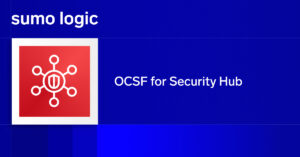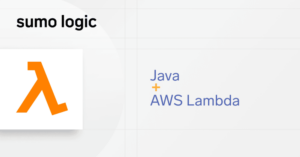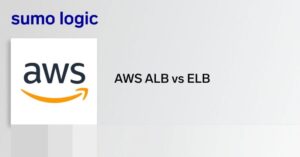Today, we made an important announcement that builds on and extends our category leadership in Continuous Intelligence. This blog is to put that announcement into context for our customers, partners and the broader industry.
In 2017, we shared our strategy to democratize machine data by building a cloud-native, Continuous Intelligence Platform™ to 1) unify modern application and machine data; 2) support the ongoing proliferation of users and access; and 3) leverage cloud-scale economics.
We did this because we saw a future coming very fast in which the requirements of digital transformation success would be dependent on how well companies consumed and acted upon real-time analytics. In 2020, we believe that future has arrived. We now live in an Intelligence Economy. In the 20+ years of participating in software and infrastructure management transitions, in my opinion, no shift has come faster, or will be felt more pervasively than the Intelligence Economy.
Five requirements for digital business success
In the Intelligence Economy, five requirements are redefining digital transformation success. These requirements greatly increase the complexity of developing, managing and securing modern applications running on cloud or hybrid infrastructures. However, most reporting, analysis and search tools are not built for these new requirements—their limitations in data collection, siloed use cases and old licensing models create intelligence gaps and cost inefficiencies across development, operations, security and business use cases.
Modern business users are demanding a better way to monitor, troubleshoot and secure these modern application/cloud environments—one that is inherently built for the new, real-time model of speed, agility, closed loop processes, cross-functional collaboration and the unexpected, such as on-demand surges or a security breach. In today’s world, our customers tell us: customer experience has no downtime—digital services must be reliable, secure and constantly improving to attract and keep our customers. And, this is a constant—no excuses.
Observability: Most monitoring tools fall short
Addressing this need has given rise to the latest buzzword: Observability. Thus far, industry and vendor definitions equate observability with monitoring systems that track application performance metrics based on thresholds only, coupled with limited log functionality—incomplete data sets, no machine learning and no advanced analytics—to resolve issues. This perspective, born from the days of server-based, monolithic applications, misses the mark of how different cloud-based, modern applications are. These apps are highly complex, dynamic, automated, abstracted and ephemeral. They fail in ways too numerous to predict. And to “observe” them means application owners need to capture ALL of their signals across standard and custom code to monitor, diagnose and troubleshoot them in real-time. All of this is required continuously to drive reliable and secure customer experiences.
DevOps requires more data
The chart below outlines the role of data to monitor, diagnose and troubleshoot today’s complex modern application environments. New roles and practices are emerging to develop, manage and secure modern applications, such as Site Reliability Engineers (SREs), and Service Owners, whose responsibility is to ensure service reliability can span from development to operations. What this chart conveys is simple: observability is more than monitoring. In fact, the activities that drive service reliability are disproportionate to diagnosis and troubleshooting because they require more data. Thus, monitoring systems fall short due to their sampling of limited data sets, lack of automated processes, inability to analyze unstructured data and inability to correlate across signal types.
The Power of a Continuous Intelligence Platform™ for Complete Observability
From our perspective, Observability requires the transformation of disparate signals into intelligence to ensure application reliability, security and performance. To address this, a single platform solution must:
- Capture all data and transform it into real-time intelligence and insights: Analyze and correlate structured and unstructured data (logs, events, metrics, metadata, traces and telemetry) from standard and custom applications to monitor, diagnose and troubleshoot across development, operations and security needs;
- Deliver contextual insights to all users for continuous collaboration: Modern application responsibility and accountability is no longer in the hands of the few – collaboration spans the entire organization: DevOps and DevSecOps teams; SREs; cloud architects; security analysts, SOCs, customer support, product management, marketing/sales and finance teams;
- Enable AI/ML powered advanced analytics to surface unknown unknowns: Reducing all data (not just sampling) to system patterns for accurate situational awareness to speed troubleshooting; identify outliers that could threaten customer experience or data security; and perform schema on-demand analytics to analyze unknown data sets coming into the platform to alert on unknown unknowns;
- Security-First: Address security insight needs upfront by automating analyst workflows to better manage alert fatigue, address security events, and effectively enforce security and compliance policies; and protect all data streaming into the system, especially sensitive data (credit cards, personal identity information, healthcare records, etc.) by meeting industry compliant requirements;
- Remove licensing shackles: Provide flexible licensing customized to the way companies use their data, so they can capture, secure and analyze virtually all of it without hidden fees, cost surprises or limiting user access.
Sumo Logic Continuous Intelligence Platform addresses all these requirements today. And, with our new enhancements covering rich AWS and Microservices Observability, Software Delivery Observability, and Distributed Transaction Tracing, our platform capability extends to the use cases defining modern observability needs:
- Software Delivery: Monitor the full software build pipeline, measuring velocity and quality, for fast and secure software delivery processes while improving cross team visibility and collaboration;
- Application Lifecycle Management and Analytics: Collect and analyze key performance indicators (KPIs) to better manage applications throughout their lifecycle;
- Microservices: Comprehensive observability from both logical service and physical infrastructure perspectives, integrated with security visibility, for faster troubleshooting of orchestration/container stacks;
- Cloud Management: Multi-cloud observability for cloud migration and operations objectives; global benchmarking to improve operations and security postures;
- Web & Edge: Monitor, troubleshoot and secure content delivery networks (CDNs) to close intelligence gaps in web/edge systems.
With Sumo Logic Continuous Intelligence Platform, we enable companies to address their modern business needs for observability through reliability with a unified platform, patented analytics and Intelligence, best in class economics and cloud native security and scalability to win in the Intelligence Economy.



